Thames Water Lee Tunnel
London Borough of Newham, England
Best Water/Wastewater
Owner Thames Water
Contractor MVB Consortium
Project Manager, Lead Designer CH2M
Civil, MEP Engineer Mott MacDonald
Structural Engineer Underground Professional Services
Since becoming operational early this year, the $900-million Lee Tunnel project has captured torrents of stormwater mixed with sewage. Previously, that storm discharge would have found its way—untreated—into the Thames River, spilled from the combined-sewer overflow (CSO) at the Victorian-era Abbey Mills pumping station in East London.
The 6.9-kilometer-long tunnel, which feeds the city’s main treatment plant at Beckton, is a key element in a multibillion-dollar Thames Water Utilities Ltd. (TWU) program. The overall program aims to divert and treat around 35 million metric tons a year of CSO discharges from the city’s overwhelmed wastewater system.
 Before the Lee Tunnel’s on-time and on-budget completion in February, the Abbey Mills CSO contributed 40% of all the untreated storm discharges from the old, undersized sewers along the River Thames to west of London.
Before the Lee Tunnel’s on-time and on-budget completion in February, the Abbey Mills CSO contributed 40% of all the untreated storm discharges from the old, undersized sewers along the River Thames to west of London.
Now, the 7.2-meter-dia tunnel receives Abbey Mills’ effluent and stores it until storm flows drop to levels that can be treated at Beckton. TWU recently expanded Beckton’s capacity by 65%, to 27 cu m per second.
A huge storm in London late this June tested but failed to defeat the new diversion system, recalls David White, who leads the project management team for TWU. “There were no overflows at Abbey Mills. … Normally, all of it would have gone into the river,” he says.
Seeing such huge flows being successfully managed by the new tunnel system is “a huge tribute to the team,” adds Amar Qureshi, TWU’s director of major projects.
The Lee Tunnel, TWU’s largest project so far, is the first component of London’s CSO cleanup program. The rest of the megasewer, known as the Tideway Tunnel, will handle the remaining 60% of the overflows at a cost now put at $5.6 billion.
The Tideway Tunnel will run for some 25 km, from Acton in the west to Abbey Mills, picking up discharges from more than 30 of the worst CSOs. The 7.2-m-dia tunnel will shadow the path of the River Thames at belowground levels between 35 m and 65 m.
Because of Tideway’s huge scale, TWU, the government and the water-sector regulator OFWAT agreed to take the project off TWU’s balance sheet, says Qureshi. Apart from exposing the utility to large financial risk, the Tideway project would create “significant management distraction” from TWU’s core purpose, he adds.
So, TWU devised a novel procurement model that involves private investors. After a lengthy permitting process, TWU procured an infrastructure provider to own and inject most of the finance for the Tideway project. In parallel, TWU procured three contracts for the main civil work.
In July 2015, TWU named a team of financial institutions, called Bazalgette Tunnel Ltd., as the infrastructure provider. A few weeks later, Bazalgette signed tunnel construction contracts with the three consortiums previously selected by TWU.
The contractors included firms from the U.K., the Netherlands, Spain and France. The joint venture securing the Tideway section next to Abbey Mills included two of the three firms responsible for the new Lee Tunnel.
France-based Vinci Construction Grands Projets and Bachy Soletanche Ltd. joined the U.K.’s Costain Group to secure the $800-million eastern section of Tideway, including 11.1 km of main and connecting tunnels.
For the Lee project, Vinci and Bachy teamed with the U.K.’s Morgan Sindall Ltd. in the MVB joint venture. Mott Macdonald Group and Underground Professional Services acted as MVB’s detail designer.
CH2M, supported by staff seconded from TWU and AECOM, became the owner’s supervisory project management team. CH2M was also the owner’s lead designer.
For the construction, TWU adopted for the first time a version of the U.K.’s New Engineering Contract (NEC), in which both parties agree to target costs and share in losses or gains. Design and construction staff from each organization were colocated to ease communications.
Nevertheless, by mid-2013, “detailed contractual processes were threatening to delay work,” notes the team’s entry form. “The main challenge in the early years was the ground conditions. … Both parties became intransigent,” adds White.
The contractor had found deposits of benzene about 80 m below ground, which, it claimed, could not have been foreseen, recalls Vinci’s Emmanuel Costes, who is MVB’s deputy project director. “Everybody wanted to avoid going to a third party” to resolve the growing dispute, he adds.
After months of negotiations, both sides agreed to pool their contingency funds and work more collaboratively. Senior management evaluated which contract functions, such as commercial and technical, could be simplified within the NEC contract.
In January 2014, all parties signed a partnering agreement to appoint the most suitable person to take sole responsibility for individual functions. “The atmosphere has always been very good at site level,” says Costes. “Once the agreement was in place, we knew where we were heading and had a common goal.”
At the same time, TWU increased the scope of MVB’s contract to include some elements that had been set aside for the Tideway program, including another large shaft at Abbey Mills. “We saw there was efficiency to be gained by the Lee Tunnel team doing the work,” says Qureshi.
The original contract called for a shaft at Abbey Mills to receive wastewater and, by gravity, send it to a shaft at Beckton. The main flow at Beckton passes through a short tunnel to a pumping shaft, which leads up to the treatment area. Another shaft allows excessive storm flows to be discharged into the river.
The shafts range from 72 m to 82.5 m in excavation depth within slurry trench walls that reach up to 98 m below ground, according to the contractor. The reinforced-concrete walls are up to 1.8 m thick.
For the shafts’ smooth secondary linings, MVB’s designer Mott MacDonald chose not to use conventional cast-in-place reinforced-concrete against the slurry trench walls.
Voids could have developed between the secondary lining and outer wall. In that case, the lining would need heavy reinforcing to resist hydrostatic pressures generated within the full shaft.
Instead, the secondary lining was slip-cast as a free-standing concrete tube within the excavation, leaving an annulus about 40 centimeters wide between it and the slurry wall. Then, by carefully filling the annulus with grout, the lining was precompressed to reduce the risk of cracks.
Precompression—coupled with the use of steel-fiber reinforcement, instead of rebar, in the secondary lining—saved 1,500 metric tons of steel, cut construction time and removed the risk of long-term corrosion, according to Mott MacDonald.
For the tunnel, MVB used a slurry TBM to manage high groundwater pressures up to 8 bars. To avoid flooding from faulted chalk ground, the contractor launched the machine and its trailing gantries from Beckton’s roughly 20-m-dia overflow shaft without a back-shunt tunnel construction.
After completing 8.5 million working hours, the project team reports “a remarkably low accident frequency rate of 0.21,” despite the hazardous nature of underground construction.
The team was required to maintain historically valuable elements, such as the building and equipment of one of Abbey Mills’ pump houses. At Beckton, the team dismantled, brick by brick, the 27-m-tall chimney of the original Victorian-era engine house, close to the overflow shaft. The engine house will be rebuilt later.

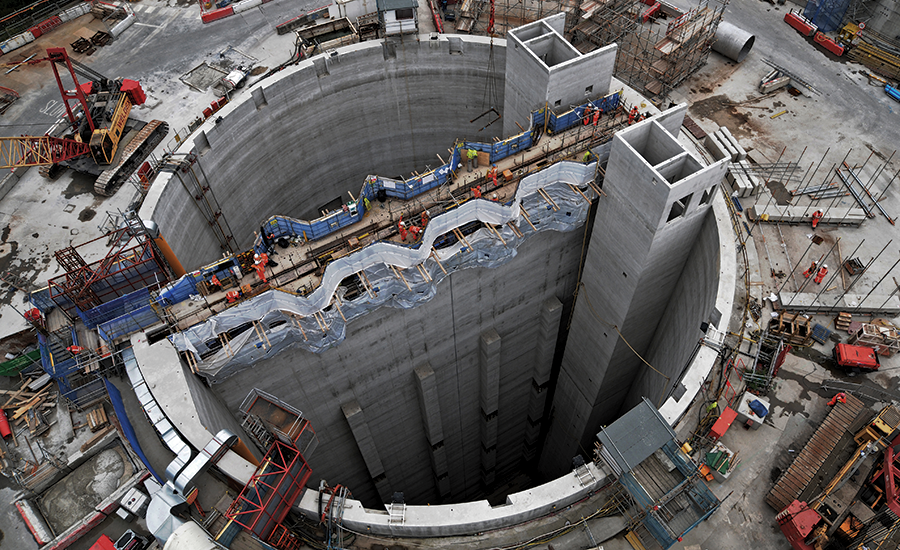
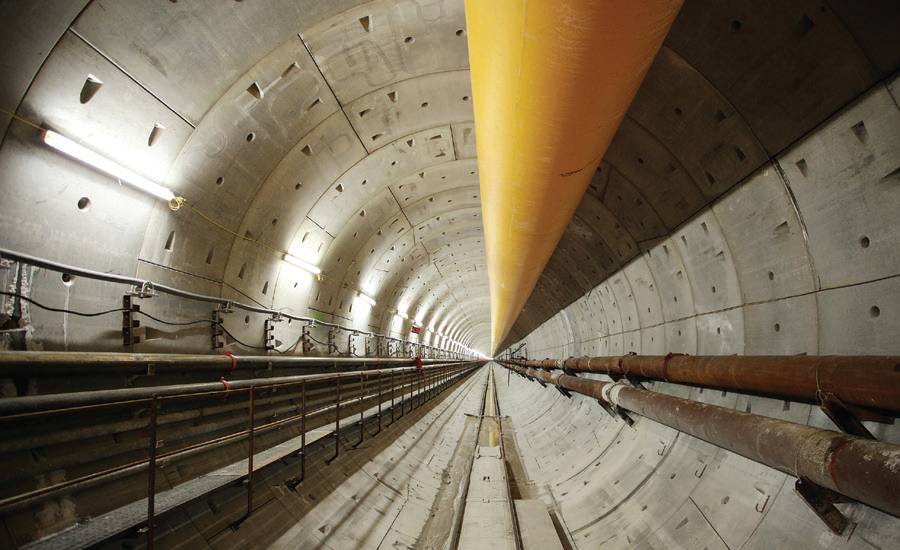
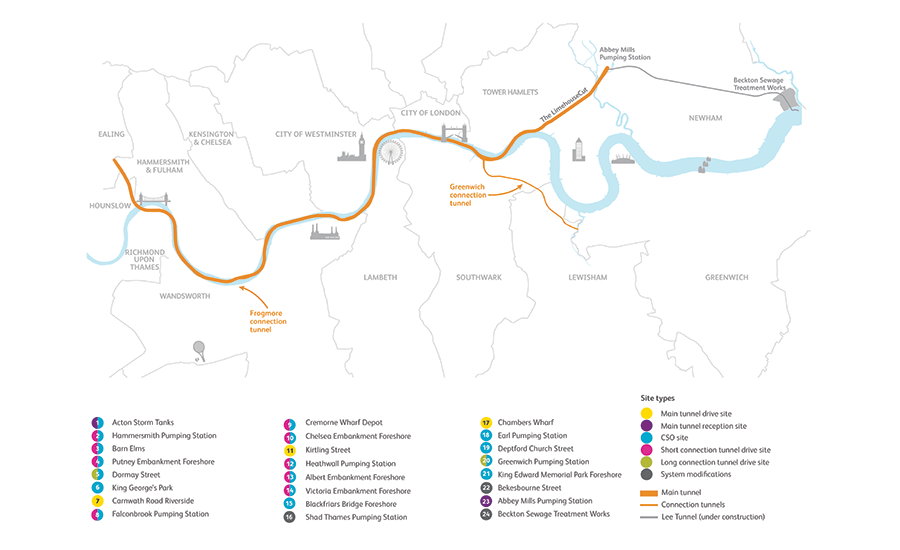
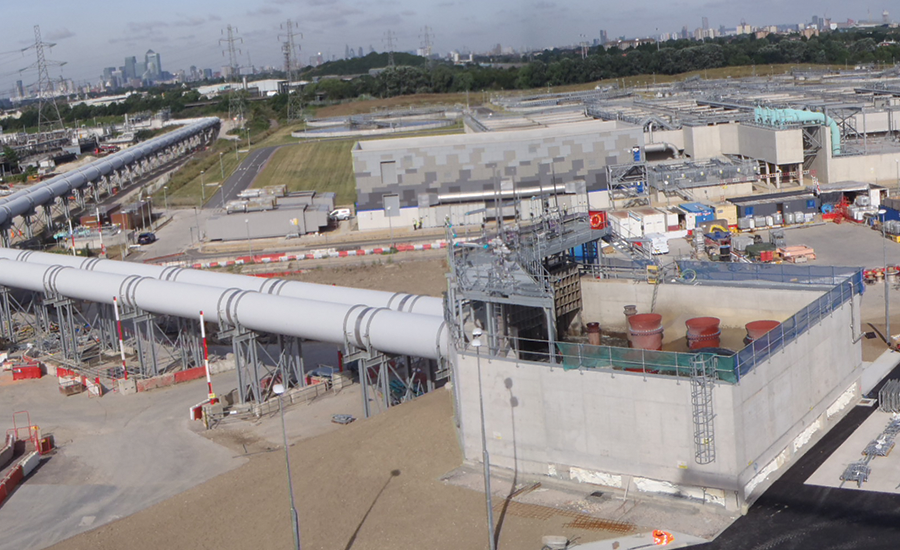


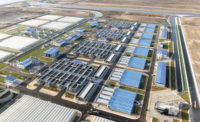

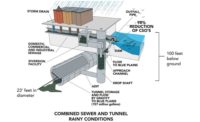
Post a comment to this article
Report Abusive Comment